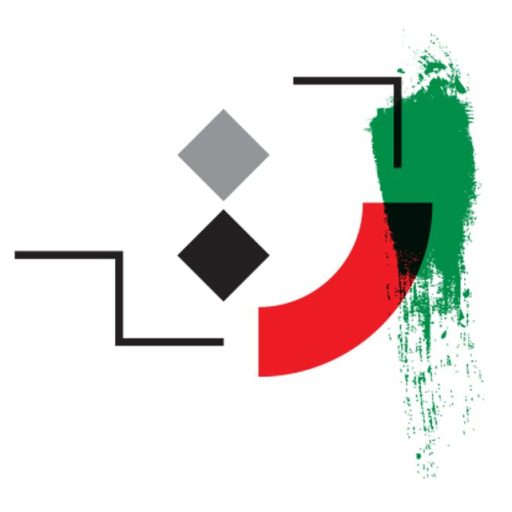Ali Akbar Sadeghi
Biography
Ali Akbar Sadeghi was born on 1937 a graduate of the College of Art, University of Tehran, is one of the most prolific and successful Iranian painters and artists.
As a child, Ali Akbar Sadeghi reminisces that he would be lost in the chants of narrators that gave account of Shahnameh stories; accounts of Siavash riding on horseback, still-armored Bijan, Rostam’s arrow hitting Ashkboos in the heart, Faramarz, elephant rider, and bravery of other heroes whose names remain in Persian literature and folklore forever. In general, the lyrical, heroic world of legends is an indispensable part of Ali Akbar Sadeghi’s worldview, a world whose figurative representations sometimes appear in old miniature paintings or more popular forms of art, including coffeehouse painting, reverse painting on glass, imprints on wood and paper, and stunning images in lithographed books.
Painting
In his evocative paintings, Ali Akbar Sadeghi draws on the rich traditions of Persian art but adds to them a surreal edge that involves dizzying spatial manipulations and startling combinations of real and fantastical objects, producing breath-taking kaleidoscopes of colour and form. A master story-teller, the varied Persian sources of Sadeghi’s tales range from historical Persian iconography including swords, horses, gardens and warriors, intricate decorative motifs and patterns taken from classic rugs, to the compositions of archetypal Iranian miniatures and portraits, particularly those of the Qajar dynasty.
But Sadeghi’s inspiration from the cultural heritage of Iran is not just aesthetic; the presence of Persian sagas and legends, epic poems and philosophies, and even the teachings of Gnosticism loom large in his work. While Sadeghi has undoubtedly been motivated by the varied artistic forms and schools of thought of his country, his productions have undeniable links to the automatic art of Max Ernst and De Chirico, among others. Considered by some to be Iran’s Dali and by himself to be simply a narrator, Sadeghi’s paintings give a 20υth/21υst Century edge to the typical Iranian story or image
Style
Sadeghi has been artistically active in the past 60 years. His style is a kind of Iranian surrealism, based on Iranian forms and compositions of traditional paintings, the use of Iranian iconography, and the use of Persian cultural motifs, signs and myths, full of movement and action, in prominent and genuine oil colours, in large frames, very personal, reminiscent of epic traditional Persian paintings and illustrations, with a conspicuous mythical style.
He initiated a special style in Persian painting, influenced by Coffee House painting, iconography, and traditional Iranian portrait painting, following the Qajar tradition – a mixture of a kind of surrealism, influenced by the art of stained glass.
The spectacular style and flamboyant use of colour in paintings and sculptures of Ali Akbar Sadeghi behold the richness of iconography in Qajar Era paintings, particularly a school of painting that has become known as the Qahveh Khaneh (Coffee house paintings). The meticulous detailing, intricate scenes and the subject matter, often heroes in full armour, follow the traditions of Miniature painting. At close inspection a large number of artists’ works are in one way or another self-portraits. The story teller, the sleep walker, seems not to be able to invent without identifying with the characters of his imagination. Here is a marvellous world where the heroes of artist do not appear to be fighting the evils of the world, they are either frozen in time or seem to be engaged in their own internal conflict. From the “Hanged Coat” to the depiction of the old hero with an aid band on his face to the “Torture Armchair”, there is a strong sense of defeat but evil doesn’t seem to have prevailed. It appears as if the artist is content with wisdom that age and years of turmoil has brought him. The Emotional power of these self-portraits and their poetic reality overwhelms the viewer and invokes feelings of sympathy that derives from conflict within every human being. The surreal world of Ali Akbar Sadeghi is governed by the strength of dreams, a world of his own. He successfully transfers his emotions and turmoil’s but also creates scenes and objects that are complete and precise. A perfect balance. And when he is not busy pushing nails in to the faces of his heroes he is ready to play chess. The game of nobility that commands tact, maturity and dignity.
Centre for the Intellectual Development of Children and the Youth
He is among the first individuals involved in the Centre for the Intellectual Development of Children and the Youth, and was among the founders of the Film Animation department of this institute. In 1991, at the 25th anniversary of the foundation of the Institute for the Intellectual Development of Children and Young Adults, Sadeghi was honoured for his outstanding achievements in book illustration and film making, and his participation in more than 50 festivals of films and books.
Aside from illustration, he has published number of books for the Centre for the Development of Children and the Youth, and has made number seven films by using his special style in painting. Films produced by Sadeghi have won more than 20 awards at International Film Festivals. Also, for his book illustrations he has won four international awards.
Sabz Gallery
In 1989 he founded Sabz Gallery, which was actively and continuously exhibiting the works of Iranian painters until 2003. In 2011 His permanent works space and atelier established that continuously showcases works belonging to different periods of Sadeghi’s long professional life.
Cultural Figure
In total, he has participated in over 50 individual and group exhibitions and auctions, over 8 volumes of books and he has been a member of jury panels in over 10 international biennial exhibitions.
In 2009, Ali Akbar Sadeghi was recognized as an outstanding cultural figure and contributor to Iranian art and culture by the ministry of Culture in Iran.
- Birthday: 23.11.1937
- Birthplace: Tehran, Tehran, Iran
- Interview date: 15.02.2015 – 22.02.2015
Painter
Farshid Mesghali
Bita Fayyazi
Pariyoush Ganji
